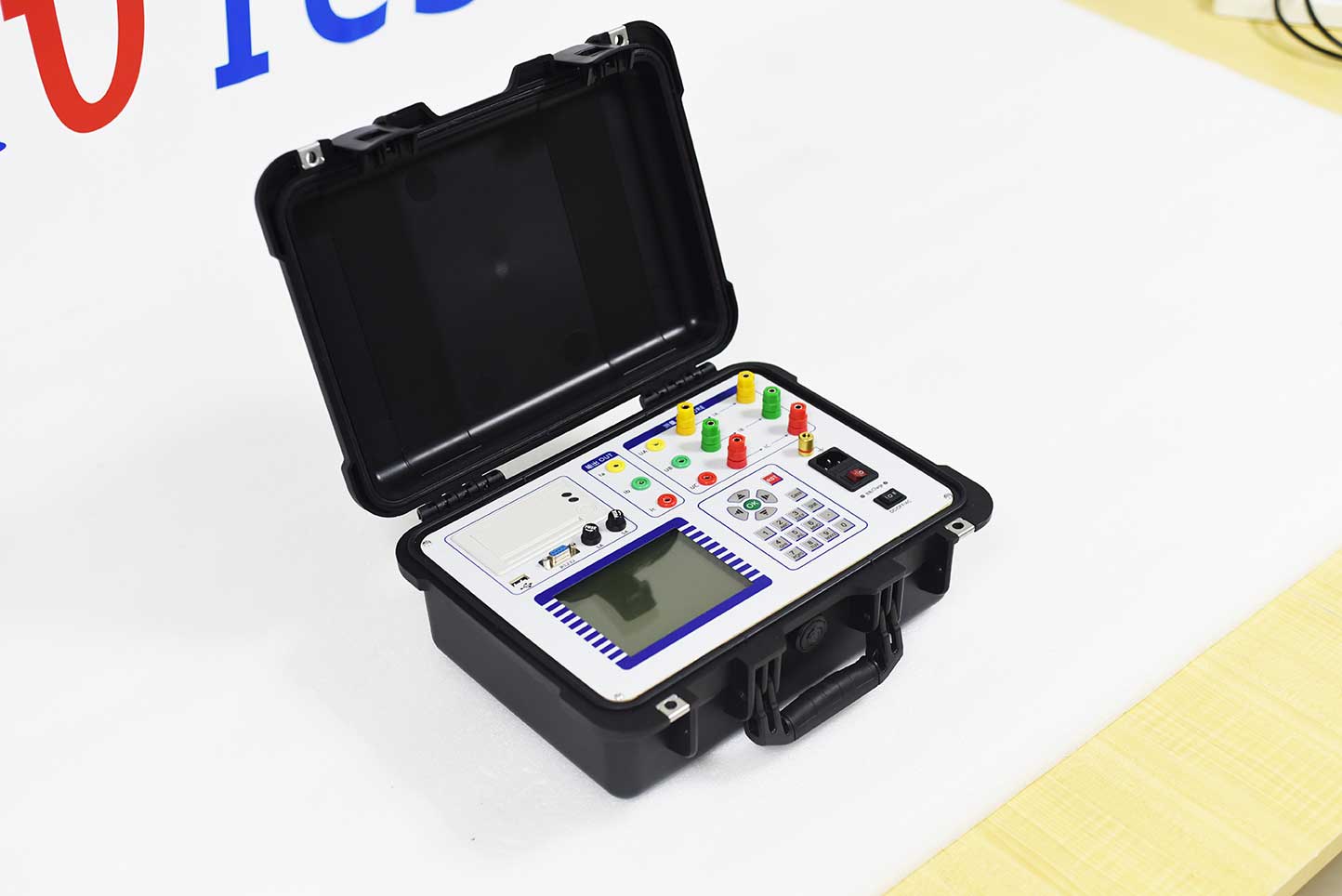The transformer capacity no-load tester is a specialized instrument used to measure key parameters such as transformer capacity, no-load loss, and load loss. The following is a detailed introduction to the tester:
1. Principle of Tester
The principle of the transformer capacity no-load tester is mainly based on testing the no-load and load characteristics of the transformer.
① No load characteristic test: Apply a rated voltage of sine wave rated frequency from either side of the transformer winding, and open the other windings. Under these conditions, measure the no-load current and no-load loss of the transformer. The no-load current is the current flowing through the primary side of a transformer when the secondary side is open circuit at rated voltage; The no-load loss refers to the losses generated by the iron core and winding of a transformer when the secondary side is open circuit at rated voltage, mainly iron losses, including hysteresis losses and eddy current losses.
② Load characteristic test: Short circuit the secondary side of the transformer at rated current, apply rated current to the primary side, and measure the voltage and power at this time. Short circuit loss refers to the loss generated on the primary side of a transformer when the secondary side is short circuited at rated current; Impedance voltage is the ratio of the primary voltage to the rated voltage at this time.
2. Tester function
① Accurate measurement: Advanced measurement technology is used to accurately and quickly measure key parameters such as transformer capacity, no-load loss, and load loss.
② Data storage and analysis: It has functions such as data storage, analysis, and printing, making it convenient for users to further process and analyze measurement results.
③ Easy to operate and safe and reliable: The design is easy to operate, safe and reliable, and can meet the measurement needs in various environments.
3. Test instrument operation method
① No load test: Apply a rated voltage of sine wave rated frequency from one winding of the transformer (usually from the secondary low voltage side), open the other windings, and measure the no-load current and no-load loss. If the test conditions are limited and the power supply voltage cannot reach the rated voltage, the test can be conducted under non rated voltage conditions, but the error is relatively large, and it is generally only used to check whether the transformer has faults.
② Load test: Manually short-circuit the low-voltage high current side of the transformer, apply a test voltage of rated frequency from the rated tap of the coil on the high-voltage side, so that the current in the winding reaches the rated value, and then measure the input power, applied voltage (i.e. short-circuit loss and short-circuit voltage), and current value.
4. Precautions for use
① Safe operation: During the measurement process, be sure to avoid contact with the metal parts of the test line to prevent electrical damage.
② Accurate wiring: When measuring wiring, it is necessary to strictly follow the instructions to ensure that the wiring is correct and error free.
③ Check parameters: Before testing, be sure to carefully check whether the set parameters are correct to avoid any deviation in the test results.
④ Power requirements: It is best to use a grounded power socket to ensure stable and reliable power supply.
⑤ Restrictions: Cannot operate under excessive voltage and current limits to prevent instrument damage.
⑥ Precautions for short circuit test: During the short circuit test, the short circuit on the non pressurized side must be in good condition, otherwise it will affect the test results. At the same time, if the high-voltage or medium voltage side outlet bushing is equipped with a ring current transformer, the secondary of the current transformer must be short circuited before the test.
⑦ Instrument maintenance: If the instrument is not used for a long time (more than three months), the battery will be depleted and damaged. Therefore, the instrument should be charged every three months to ensure its normal use.
In summary, the transformer capacity no-load tester is one of the important testing equipment in the power system. By accurately measuring the key parameters of transformers, it provides important basis for performance evaluation, fault diagnosis, and operation maintenance of transformers. During use, it is necessary to strictly follow the operating procedures and precautions to ensure the accuracy of test results and the safety and reliability of the instrument.

The ZC-202A transformer no-load load comprehensive characteristic tester can measure the no-load current, no-load loss, short-circuit voltage, and short-circuit (load) loss of the transformer. Harmonic testing can be conducted to analyze up to the 31st harmonic. The instrument automatically switches ranges internally, allowing for a wide range of voltage and current measurements and simple wiring. When conducting no-load and load tests on three-phase transformers, the instrument can automatically determine whether the wiring is correct and display vector diagrams of three-phase voltage and current.
Kvtester Electronics Technology Co.,Ltd. is a high-tech enterprise specializing in power testing, testing, research and development, production, and sales of testing equipment. It has been engaged in the electrical testing industry for many years, and its products are of high quality. We welcome customers to come and purchase. Service hotline: 0086-27-81778799, to learn more, visit the official website: www.kvtester.com





